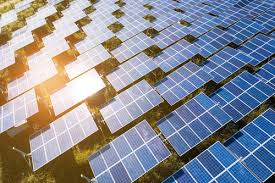
Breaking News
 Elon Tells Rogan the Real Reason Democrats are Prolonging the Government Shutdown [WATCH]
Elon Tells Rogan the Real Reason Democrats are Prolonging the Government Shutdown [WATCH]
 Newsom: Trump Is Trying to Rig the Election -- He Knows GOP Will Lose
Newsom: Trump Is Trying to Rig the Election -- He Knows GOP Will Lose
 There is zero justification for the Department of Justice's silence while the most serious...
There is zero justification for the Department of Justice's silence while the most serious...
 Gabbard Says Trump Has Ended America's Era Of 'Regime Change'
Gabbard Says Trump Has Ended America's Era Of 'Regime Change'
Top Tech News
 Graphene Dream Becomes a Reality as Miracle Material Enters Production for Better Chips, Batteries
Graphene Dream Becomes a Reality as Miracle Material Enters Production for Better Chips, Batteries
 Virtual Fencing May Allow Thousands More Cattle to Be Ranched on Land Rather Than in Barns
Virtual Fencing May Allow Thousands More Cattle to Be Ranched on Land Rather Than in Barns
 Prominent Personalities Sign Letter Seeking Ban On 'Development Of Superintelligence'
Prominent Personalities Sign Letter Seeking Ban On 'Development Of Superintelligence'
 Why 'Mirror Life' Is Causing Some Genetic Scientists To Freak Out
Why 'Mirror Life' Is Causing Some Genetic Scientists To Freak Out
 Retina e-paper promises screens 'visually indistinguishable from reality'
Retina e-paper promises screens 'visually indistinguishable from reality'
 Scientists baffled as interstellar visitor appears to reverse thrust before vanishing behind the sun
Scientists baffled as interstellar visitor appears to reverse thrust before vanishing behind the sun
 Future of Satellite of Direct to Cellphone
Future of Satellite of Direct to Cellphone
 Amazon goes nuclear with new modular reactor plant
Amazon goes nuclear with new modular reactor plant
 China Is Making 800-Mile EV Batteries. Here's Why America Can't Have Them
China Is Making 800-Mile EV Batteries. Here's Why America Can't Have Them
Another High Efficiency Solar Cell Material for 29+% Efficiency

The current world efficiency record for MOVPE-grown GaAs solar cells that incorporate AlInP window layers is 29.1%. With only GaInP, the maximum efficiency for HVPE-grown solar cells is estimated to be only 27%.
Now that aluminum has been added to the mix of D-HVPE, the scientists said they should be able to reach parity with solar cells made via MOVPE.
ACS Applied Energy Materials – Growth of AlGaAs, AlInP, and AlGaInP by Hydride Vapor Phase Epitaxy
Researchers demonstrate hydride vapor phase epitaxy (HVPE) of AlxGa1–xAs, AlxIn1–xP, and AlxGayIn1–x–yP using an AlCl3 precursor. We study the growth of the AlxGa1–xAs alloy system to elucidate the effects of deposition temperature, V/III ratio, and group V precursor species on Al solid incorporation via AlCl3. Crucially, the presence of group V hydride at the growth front kinetically promotes the solid incorporation of Al. We use these insights to demonstrate controlled deposition of AlxGa1–xAs, and for the first time by HVPE, AlxIn1–xP and AlxGayIn1–x–yP. These results create exciting implications for HVPE-grown high-efficiency III–V solar cells and devices with reduced cost.

 China Innovates: Transforming Sand into Paper
China Innovates: Transforming Sand into Paper

